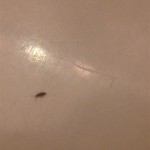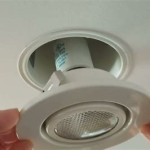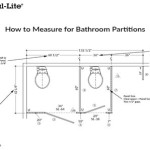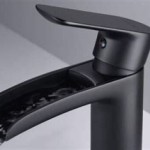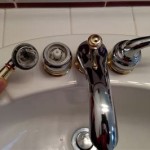How to Fix Mold on Bathroom Walls: A Comprehensive Guide
Mold growth in bathrooms is a common problem due to the consistently high humidity and moisture levels. Bathrooms provide an ideal environment for mold spores to thrive, particularly on walls. This guide provides a detailed, step-by-step approach to identifying, removing, and preventing mold growth on bathroom walls, ensuring a healthier and cleaner living space.
Addressing mold promptly is crucial for several reasons. First, mold can cause significant damage to building materials, weakening the structural integrity of the walls and leading to costly repairs if left unchecked. Second, exposure to mold can trigger a range of health problems, including allergic reactions, respiratory issues, and other health concerns. These health effects can be particularly problematic for individuals with pre-existing respiratory conditions, allergies, or weakened immune systems. Finally, visible mold is aesthetically unappealing and can negatively impact the overall value of the property. A proactive approach to mold remediation is therefore essential for maintaining both the physical integrity of the bathroom and the well-being of its occupants.
Before embarking on any mold remediation process, it is imperative to accurately identify the presence of mold. Mold can manifest in various colors, including black, green, brown, or white, and often appears as fuzzy or slimy patches on surfaces. Look for discoloration, staining, or a musty odor, which are all telltale signs of mold growth. Common areas where mold tends to accumulate include corners, grout lines, areas around the shower or bathtub, and behind toilets where moisture is likely to linger. A thorough inspection of the entire bathroom, including areas that may not be immediately visible, is crucial to assess the extent of the mold problem.
Once mold is detected, it is important to differentiate between minor mold growth and more extensive infestations. Minor mold growth, typically covering an area of less than 10 square feet, can often be addressed through DIY methods. However, larger infestations may necessitate professional mold remediation services. If the mold covers a significant area, is deeply embedded within porous materials, or if there are concerns about the potential presence of hazardous mold species, such as black mold (Stachybotrys chartarum), it is highly recommended to consult with a qualified mold remediation specialist. Professional assessment can accurately identify the type of mold present and determine the most effective and safe removal strategies.
Key Point 1: Preparation and Safety Measures
Prior to commencing any mold removal process, adequate preparation is essential to ensure both safety and effectiveness. This involves gathering the necessary tools, protective equipment, and cleaning solutions. Proper ventilation is paramount. Open windows and doors to allow fresh air to circulate throughout the bathroom during and after the cleaning process. If possible, use a fan to further enhance ventilation.
Protective gear is a critical component of the preparation process. Wear a respirator or a NIOSH-approved N-95 mask to prevent inhalation of mold spores. Goggles should be worn to protect the eyes from splashes and debris. Gloves, preferably made of rubber or nitrile, will protect the skin from contact with mold and cleaning solutions. Old clothing or disposable overalls should be worn to prevent contamination of personal attire.
The selection of appropriate cleaning solutions is also important. Several effective options are available for mold removal, including diluted bleach solutions, vinegar, and commercial mold cleaners. Bleach solutions, typically consisting of one part bleach to ten parts water, are effective for disinfecting surfaces and killing mold. However, bleach should never be mixed with ammonia or other cleaning agents, as this can create toxic fumes. Vinegar, a natural and less harsh alternative, can also be used to kill mold on various surfaces. Commercial mold cleaners are specifically formulated to remove mold and are available at most hardware stores. When using any cleaning solution, it is essential to carefully read and follow the manufacturer's instructions.
To further protect the surrounding areas, consider covering nearby surfaces with plastic sheeting. This can help prevent the spread of mold spores during the cleaning process and minimize the risk of cross-contamination. Secure the plastic sheeting with painter's tape to ensure a tight seal. Proper preparation not only enhances the effectiveness of the mold removal process but also safeguards the health and safety of the individuals performing the work.
Key Point 2: Mold Removal Methods
The specific method for removing mold from bathroom walls will depend on the type of surface affected. For non-porous surfaces such as tiles, glass, and plastic, the mold removal process is generally straightforward. Begin by spraying the affected area with the chosen cleaning solution, ensuring adequate coverage of all visible mold. Allow the solution to dwell on the surface for the recommended time, typically 10 to 15 minutes, to allow it to effectively penetrate and kill the mold. Next, use a scrub brush or sponge to thoroughly scrub the moldy areas. Pay close attention to grout lines and other areas where mold tends to accumulate. Rinse the cleaned surfaces with clean water to remove any remaining cleaning solution and mold residue. Finally, dry the surfaces completely with a clean cloth or towel. Proper drying is essential to prevent the recurrence of mold growth.
Porous surfaces, such as drywall and painted walls, require a more careful approach. Mold can penetrate deep into these materials, making complete removal more challenging. For minor mold growth on drywall or painted walls, try wiping the affected area with a damp cloth dampened with a mold-killing solution. Avoid excessive wetting, as this can further damage the drywall. For more stubborn mold stains, consider using a specialized mold remover designed for porous surfaces. Apply the remover according to the manufacturer's instructions and allow it to dwell for the recommended time. Scrub the area gently to avoid damaging the wall surface. If the mold is deeply embedded or covers a large area, it may be necessary to remove and replace the affected section of drywall. This involves cutting out the damaged section, installing new drywall, and refinishing the surface. This task may be best left to a professional.
Grout lines are particularly susceptible to mold growth due to their porous nature. To effectively remove mold from grout lines, apply a mold-killing solution specifically designed for grout. A stiff-bristled brush, such as a toothbrush or grout brush, can be used to scrub the grout lines thoroughly. For stubborn mold stains, consider using a grout cleaner containing bleach. After scrubbing, rinse the grout lines with clean water and dry them completely. To prevent future mold growth in grout lines, consider sealing the grout with a grout sealer. This will help to create a barrier against moisture and prevent mold from penetrating the grout.
Key Point 3: Prevention Strategies
Preventing mold growth is just as critical as removing existing mold. Controlling moisture levels is the cornerstone of mold prevention in bathrooms. After showering or bathing, always ensure adequate ventilation by opening windows and doors or using the exhaust fan. The exhaust fan should be used during and for at least 30 minutes after showering to remove excess moisture from the air. Regularly check and clean the exhaust fan to ensure it is functioning efficiently.
Address any leaks or sources of moisture promptly. Leaky faucets, showerheads, or toilets can contribute to persistent moisture problems that promote mold growth. Repair any leaks as soon as they are detected to prevent water from accumulating and creating a favorable environment for mold. Inspect plumbing fixtures and pipes regularly for signs of leaks or condensation. Proper maintenance of plumbing systems is essential for preventing moisture-related problems.
Regular cleaning and maintenance of bathroom surfaces are also important for preventing mold growth. Wipe down shower walls and doors after each use to remove excess water and soap scum, both of which can provide nutrients for mold. Regularly clean grout lines and other areas prone to mold growth with a mold-killing solution. Use a squeegee to remove water from shower walls and doors after each use. Encourage air circulation by avoiding overcrowding in the bathroom. Hanging towels and bathmats to dry properly can also help prevent moisture from accumulating.
Consider using mold-resistant paint in the bathroom. These paints contain additives that inhibit mold growth and provide an extra layer of protection against moisture. Mold-resistant paints are available in a variety of colors and finishes and can be applied to walls and ceilings. They are particularly useful in bathrooms with high humidity levels or poor ventilation. Furthermore, dehumidifiers can be employed to reduce humidity levels, especially in bathrooms that lack adequate ventilation. Maintaining a humidity level below 60% can significantly inhibit mold growth. Regular monitoring of humidity levels with a hygrometer can help ensure that the bathroom environment remains unfavorable for mold.
By consistently implementing these preventative measures, the likelihood of mold recurring on bathroom walls can be significantly reduced, maintaining a healthier and cleaner bathroom environment.

How To Get Rid Of Mold In The Shower On Bathroom Walls Clorox

How To Remove Mold From Walls True Value

How To Get Rid Of Mold In Bathroom 2024 Tips From Puroclean

Bathroom Ceiling Mold Removal When To Clean Call Branch Environmental

Bathroom Mold How To Identify And Get Rid Of In Environix

A Handful Of Ways To Remove Mold On Bathroom Walls Clean Water Partners

How To Get Rid Of Black Mold In Bathrooms

How To Get Rid Of Mould And Mildew In Your Bathroom Rac Wa

How To Get Rid Of Mold On Bathroom Walls Family Handyman

How To Remove Mold From Bathroom Walls 6 Cleaning Tips
Related Posts
